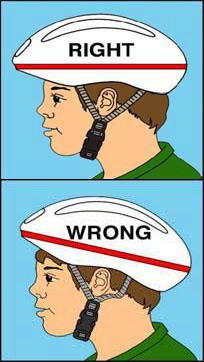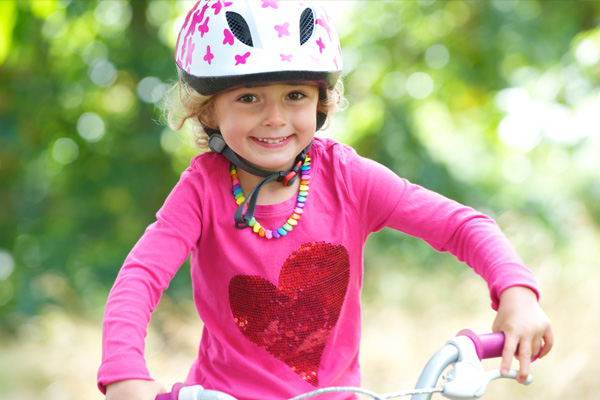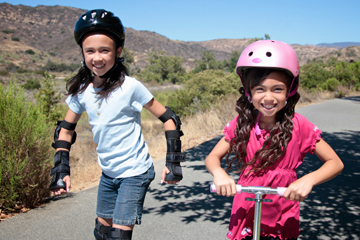Helmet Safety Tip Sheets
Download the Tip Sheet: English & Spanish
By law in California, everyone under 18 years of age must wear a Consumer Product Safety
Commission (CPSC) approved helmet while bicycling, riding a scooter, skateboard, roller
skates and in-line skates. Wearing a helmet the right way lowers the risk of brain injury in an
accident by 88 percent and help save lives. Below are helmet safety tips to protect your
child’s head and brain from getting hurt.
- Pick your style. Have your child pick out the helmet. Kids will be more likely to wear
a helmet that they like than one they think looks “silly”. - Proper fit. Perform the Helmet Fit Test by checking the following:
 Eyes: The helmet sits low on the forehead and your child should be able see the bottom rim of the helmet. A helmet that is pushed back will not protect the face or the head well in a fall or crash.
Eyes: The helmet sits low on the forehead and your child should be able see the bottom rim of the helmet. A helmet that is pushed back will not protect the face or the head well in a fall or crash.- Ears: The front and back straps should form the letter “V” just below the ears.
- Mouth: Only one finger should fit between the chinstrap and the chin. The helmet should not move more than ½ inch in any direction. Use thicker or thinner pads and adjust as needed.
- Paddings for protection. Use knee and elbow pads when riding scooters.
- Do not use wrist guards when riding anything with handlebars, such as bicycles
and scooters. (It is hard to grip the handlebars when wearing wrist guards).
- Do not use wrist guards when riding anything with handlebars, such as bicycles
- Pedestrian safety. Always follow the rules of the road and wear bright colors to be
seen by others.
When an accident happens, CHOC is ready with the only pediatric-dedicated
emergency department and trauma center in Orange County. For more important tips to
prevent injuries in children and teens, visit choc.org/safety.














